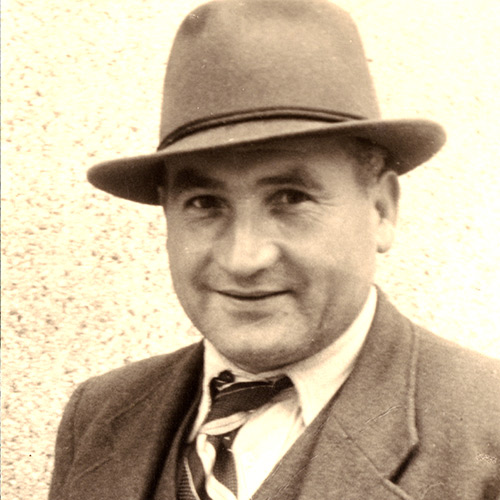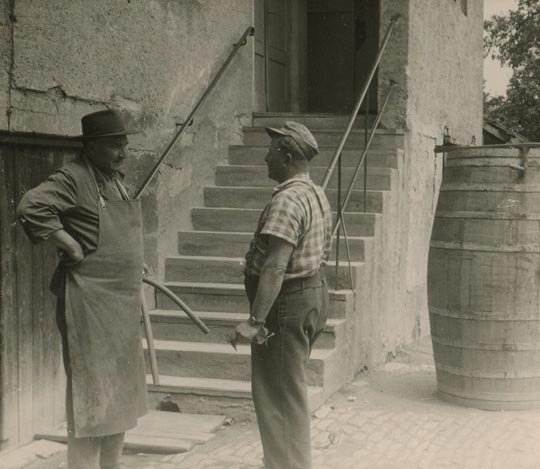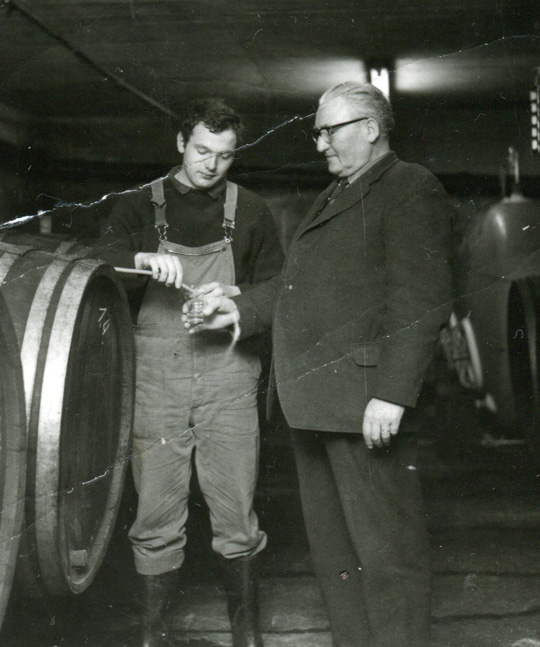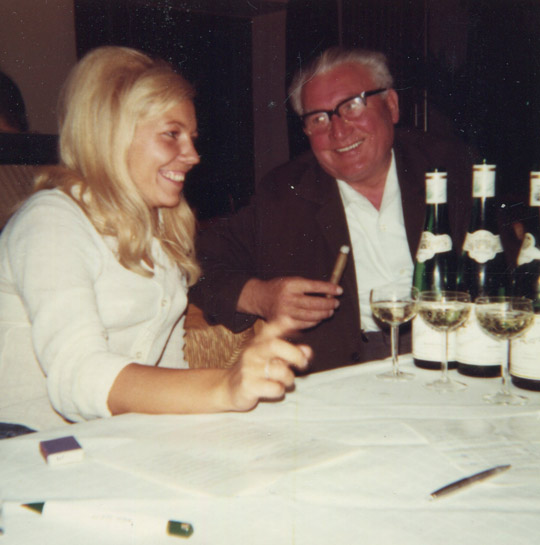Like father, like son

175 years winemaking tradition in the 5th generation
Since 1830, viticulture has been carried out in the Könen/Lauer house in Ayl on the Saar. Winegrower Matthias Lauer married the daughter of Matthias Könen in 1904 and took over the winegrowing business in 1913. Lauer added his vineyard holdings to it.
Peter Lauer (I) was born in 1906. After completing his apprenticeship in growing and grafting vines, he took over the family winery in 1938 and led it through the troubled times of the Nazi era and beyond. Peter Lauer (II) was born in 1949.
In 1956, Weingut Peter Lauer experienced a decisive expansion: through the purchase of the renowned Weingut Notar Tappen-Mungenast in Saarburg, Lauer added well-placed parcels in “Neuenberg” and “Untersten Berg” within Ayler Kupp, as well as a choice parcel in “Feils.”
In 1973, Peter Lauer (II) took over the estate with vineyards in the best sites on the Saar in the greater Mosel region. Since 2006, father Peter and son Florian have been working together in the vineyard and cellar, relying on handpicked, vegan, and sustainable still wines, sparkling wines, and crémants made exclusively from Riesling.
Download PDF: [Die Geschichte des Ayler Weines]





Our story in pictures

Napoleon’s ordinance map (1812)
An ordinance map of Saarburg and the surrounding area by the engineer-geographer Filhon. Between 1803 and 1813, Tranchot and his team of engineer-geographers began to map the region as instructed by Napoleon. The capital letter "V" stands for vigne (vines). These are the first viticultural maps of this kind in Europe.

Great-great-grandfather’s wine bar
Matthias Könen leaning out of the window and sporting a long beard.

Great-great-grandfather Johannes Schons
Manager at the top wine estate in Ayl: Schloss Ayler Herrenberg. The owner at the time was Dr. Damian Görtz.

Wedding Peter Lauer I
The knowledge of top wine production in Ayl stays in the family.

A view of Ayler Kupp from the garden
Ayler Kupp in the background before the land consolidation, or Flurbereinigung. The rows from the bottom (Unterstenberg) to the top of the hill (Stirn) run about 200 meters high.

Peter Lauer I
Talking to a vineyard worker.

A view of Ayler Kupp from the garden
A view of the prime sector of the main Ayl slope, which had been partially restructured during the Flurbereinigung. “Unterstenberg” is already separated by a path running above it.

The Lauer/Schons couple
The hosts after their work is done.

Bottling
In the mid-1950s, bottling the wines was still entirely manual work.

Cask by cask
The traditional 1,000-liter oak casks (called Fuder) have always been bottled individually. The patron himself checks the quality.

Wine tasting
The grandparents Peter I and Elisabeth during the professional assessment of their award-winning wines.

Cellar tasting
Two generations standing in front of a cask: Peter Lauer I und Peter Lauer II working in the cellar.

Peter Lauer II

Plowing
In order to bring air into the soil, the vineyards are plowed by cable winch. The airy, loose soil gives the vines access to nutrients. Peter Lauer II on the seat of the plow.

Peter Lauer I and II
Once again, two generations in the cellar: father Peter Lauer I as critical inspector of his son’s craft.

The seventies

The sales pitch...
...the favorite pastime of the senior boss (Peter Lauer II).

Loading wine
Until the 2000s, the main sales market for Lauer wines was in Germany. Mainly dry and off-dry wines flattered the locals. Fruity-sweet Rieslings were largely exported in the 1980s.

